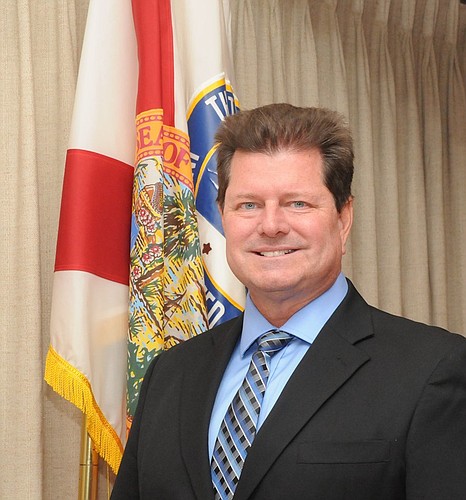- January 11, 2025
-
-
Loading

Loading

With retail businesses and real estate booming in the LPGA corridor, Daytona Beach City Commissioner Rob Gilliland understands transportation is an issue on the forefront of residents' minds.
Gilliland, who has represented Zone 4 in Daytona Beach since 2005, grew up in the area in the 1970s. He studied in the University of Maryland, obtained a degree in economics and returned to Daytona in 1996.
The Daytona West Observer recently spoke with Gilliland, and this is what he had to say about the growth in his zone:
A: The one thing that always comes up is the little Tomoka River bridge. Prior to Margaritaville or Mosaic even being considered, that bridge was failing from a traffic performance perspective. The problem with the bridge is that a lot of people use LPGA as a cut-through.
It’s projected that about 70% of the traffic that crosses that little bridge every day is from people outside of Daytona Beach. There’s been a lot of talk about impact fees, and the reality is, you can’t put an impact fee on somebody who lives in DeLand because they’re consuming traffic facilities in Daytona Beach.
At [the River to Sea TPO Board] August meeting, Mike Shannon (FDOT District 5 Secretary) acknowledged it was going to take a partnership with the county and other jurisdictions, presumably FDOT, to do something to fix that bridge.
To replace the bridge, it’s looking to be something around $25 million. What the [county] has been doing is they designated that whole corridor along I-95 and LPGA as an area where they can pool money. All the projects that are being built in Daytona, for example the Buc-ee’s gas station, is putting $3 million into that pot.
A: It’s an interesting concept because they don’t allow tractor trailers. People hear about something that large and they assume it’s a truck stop, but it’s not. The store is going to be larger than the new Publix that is being built out of Margaritaville.
I have never been to a Buc-ee’s, but what I’ve read it’s a very responsible organization. I believe their starting wage is $15 an hour, and they offer benefits as well. It’s a nice opportunity for somebody to come into town and hopefully some of the other peer-industry folks recognize they’re really lagging in what they’re doing to compensate their employees.
A: The original project was going to be 6,400 homes in two phases. The first phase is obviously underway; the second phase, they couldn’t make the numbers work. It was a confluence of events. It was the city jacking up the fees it needed for water and sewer. It was the impact fees going up. It was charges coming from the Florida Department of Transportation, construction costs going up—It literally got to a point where they couldn’t charge $400,000 for a 2,000-square-foot home.
A: I would say limitless. With rooftops come retail and professional uses. The county is obviously well aware of the transportation issues that are in that area and are working hard to amass the funds that are needed to make those improvements.
It took LPGA 20 years to get to where they were 1,000 [homes.] We are looking 5,000-6,000 in the next 10 years between other developments. These are folks that will go out and spend money in the community. It could eventually be almost a suburb of itself.